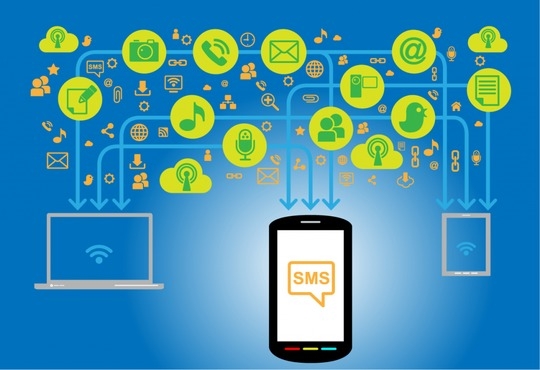Vibes Launches Transactional Mobile Messaging and Consumer Report
CIOReview Team | Wednesday, 13 April 2016, 09:53 IST
 Vibes, a mobile marketing leader, launched a transactional messaging solution to enable enterprises to power automated service messaging programs across mobile channels, and released its 2016 Transactional Messaging Consumer Report, which examines consumer perceptions and preferences in service-based messaging.
Vibes, a mobile marketing leader, launched a transactional messaging solution to enable enterprises to power automated service messaging programs across mobile channels, and released its 2016 Transactional Messaging Consumer Report, which examines consumer perceptions and preferences in service-based messaging.
Transactional or service-based mobile messages have become engrained into consumers’ expectations for the brands they transact with. Using Vibes’ Catapult platform and APIs, business users can set up messages and rules, which are triggered by “events,” such as shipping updates, service prompts, processing alerts, product updates and more.
The new consumer report from Vibes found strong demand for service-based mobile messages. Two in three consumers said shipping alerts for online orders, delivery alerts and payment confirmations would increase their likelihood of making a purchase.
Esurance Offers Customers Mobile-based Transactional Messages
Leading up to the launch of the product, Vibes worked with select partners like Esurance to integrate and test the new service. Esurance developed more than 20 unique transactional messages, ranging from updates that a vehicle is ready at a repair shop to an alert that additional info is needed to continue resolving a homeowner’s claim. The push to mobile-based transactional messages allowed Esurance to stay on the cutting edge of new service-based messaging technology, and offer their customers an industry leading solution to select how they wanted to communicate with the brand.
“A large part of our business is centered around customer service and innovating in ways that we can make their lives easier with a fast, low-effort experience. As our customers increasingly prefer to communicate and connect with us through their mobile devices, Vibes self-service messaging solution helps us meet that demand in a seamless, more modern way,” said Eric Brandt, chief claims officer at Esurance. “Vibes’ transactional messaging tool not only gives our self-directed customers more options to stay updated on their claims status via text messages, but it also gives us the ability to manage communication preferences and gain visibility into how our customers are actually interacting with the messages – all from a single interface. As a result, we can improve the actual messages we’re sending, increase efficiency and ultimately help drive revenue by delivering a better customer experience.”
2016 Transactional Messaging Consumer Report Finds Strong Demand for Service-based Mobile Messages
Based on recently captured data from over 1,000 consumers, Vibes’ study found that today’s consumers expect — and welcome — service-based communications from the companies they transact with. Whether it’s an alert that their payment has been processed or their order has shipped, these functional notifications deliver tremendous value to consumers by keeping them updated on their various interactions with a business.
Key findings include:
- Mobile phones are the No. 1 preferred device for service-based messages – The majority of consumers (70 percent) prefer to receive service-based messages on their mobile phone.
- Service-based messages create a competitive advantage – 84 percent of consumers stated service-based messaging has an impact on their decision to choose one company over another.
- Including key details and delivering service-based messages instantly drives satisfaction – Conveying basic information (e.g., time, date, tracking information) and speed are the most important features of service-based messages in terms of positively impacting customer satisfaction.
- Text messaging is the fastest communication channel for purchase information – Most consumers (78 percent) said a text message is the fastest way to be reached for important service updates on purchases.
Vibes’ Transactional Mobile Messaging Solution
In conjunction with this report, Vibes announced the general availability of transactional messaging features in its Catapult platform and best-in-class APIs for systems integration. This solution enables enterprises to power automated service messaging programs across mobile channels, including text (SMS and MMS), push and mobile wallet (Apple Wallet and Android Pay). Business users can use Vibes’ mobile marketing platform, Catapult™, to execute, personalize and measure transactional and service updates on customers’ preferred mobile channels.
“With the enterprise shift to mobile, mobile messaging has become a top priority and complement to email strategies to provide the best experience possible for customers,” said Jack Philbin, co-founder and CEO of Vibes. “Transactional messaging on mobile provides an immense opportunity to gain a non-marketing mobile touch point, drive cost savings and innovate your brand. We’re already seeing large enterprises turn to Vibes to capitalize on the immediacy of mobile and power transactional messaging programs to reach consumers on their most trusted and heavily used device in a way that is easy for them.”
Key features include:
- Channel prioritization – Catapult allows enterprises to orchestrate, prioritize and deliver transactional and service updates to customers via SMS, MMS, push notifications, and Apple Wallet and Android Pay notifications.
- User-friendly transactional messaging templates and logic – Catapult allows technical and non-technical users to create actual message templates, update message content and set up message logic.
- Real-time in-platform reporting and analytics – Catapult’s sophisticated reporting capabilities can conduct deep cross-channel analysis to help business users understand transactional messaging’s impact on the customer experience.
- Subscription management and URL shortening built-in – Catapult allows users to activate various in-app features applied to transactional messaging, including a built-in URL shortener and subscription management across channels and message types.
- Unique APIs for messaging and transactions – Catapult splits, or “decouples,” messaging content from the transactional APIs, allowing for cross-channel subscriber, channel and preference logic control.
- Flexible event API – Catapult’s transactional messaging capabilities in its UI ensure API integrations are future-proof, allowing business users to avoid lengthy development times to make simple updates.
























































.jpg)
.jpg)








.jpg)

.jpg)

.jpg)
.jpg)



.jpg)


.jpg)





























.jpg)

.jpg)
.jpg)

.jpg)
.jpg)

































.jpg)

.jpg)



















.jpg)
















.jpg)












































































































